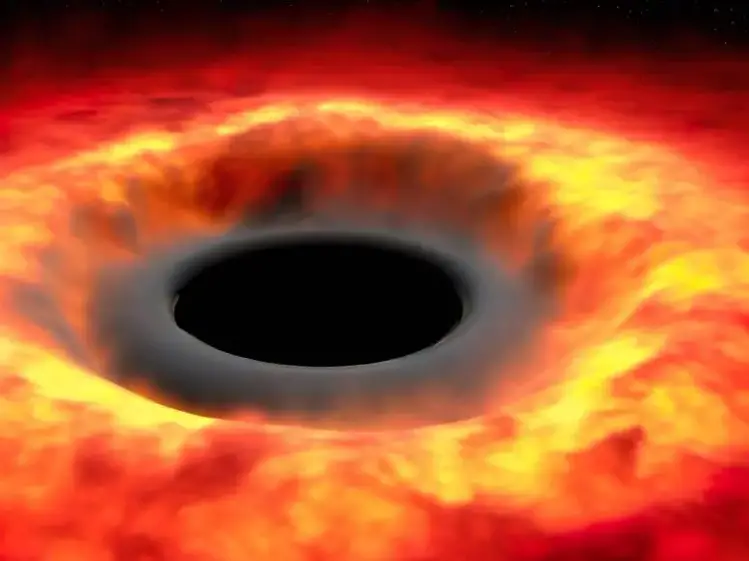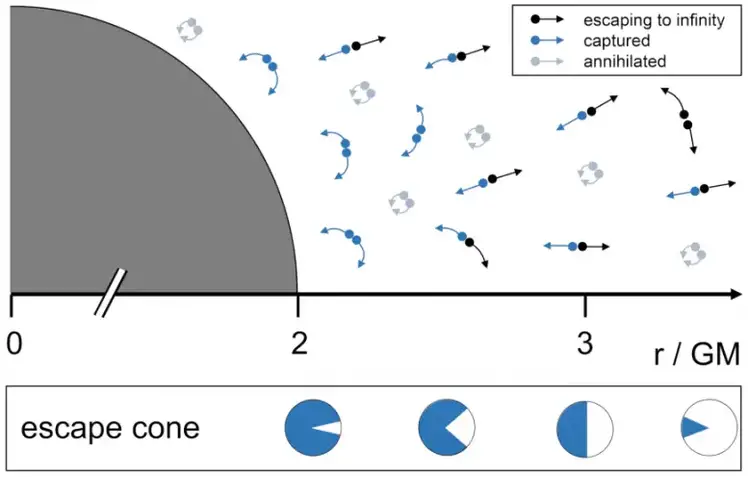A team of researchers has affirmed Stephen Hawking’s prediction about the evaporation of black holes via Hawking radiation, though they’ve provided a crucial modification. According to their research, the event horizon (the boundary beyond which nothing can escape a black hole’s gravitational pull) is not as important as previously believed in producing Hawking radiation. Instead, gravity and the curvature of spacetime play significant roles in this process. This insight extends the scope of Hawking radiation to all large objects in the universe, implying that, over a sufficiently long period, everything in the universe could evaporate.

Research shows Stephen Hawking was mostly correct about black holes evaporating via Hawking radiation. However, the study highlights that the event horizon isn’t essential for this radiation, and gravity and spacetime curvature play significant roles. The findings suggest that all large objects, not just black holes, could eventually evaporate due to a similar radiation process.
New theoretical research by Michael Wondrak, Walter van Suijlekom, and Heino Falcke of Radboud University has shown that Stephen Hawking was right about black holes, although not completely. Due to Hawking radiation, black holes will eventually evaporate, but the event horizon is not as crucial as has been believed. Gravity and the curvature of spacetime cause this radiation too. This means that all large objects in the universe, like the remnants of stars, will eventually evaporate.
Using a clever combination of quantum physics and Einstein’s theory of gravity, Stephen Hawking argued that the spontaneous creation and annihilation of pairs of particles must occur near the event horizon (the point beyond which there is no escape from the gravitational force of a black hole). A particle and its anti-particle are created very briefly from the quantum field, after which they immediately annihilate. But sometimes a particle falls into the black hole, and then the other particle can escape: Hawking radiation. According to Hawking, this would eventually result in the evaporation of black holes.

Schematic of the presented gravitational particle production mechanism in a Schwarzs𝘤𝘩𝘪𝘭𝘥 spacetime. The particle production event rate is highest at small distances, whereas the escape probability [represented by the increasing escape cone (white)] is highest at large distances. Credit: Physical Review Letters
Spiral
In this new study, the researchers at Radboud University revisited this process and investigated whether or not the presence of an event horizon is indeed crucial. They combined techniques from physics, astronomy, and mathematics to examine what happens if such pairs of particles are created in the surroundings of black holes. The study showed that new particles can also be created far beyond this horizon. Michael Wondrak: “We demonstrate that, in addition to the well-known Hawking radiation, there is also a new form of radiation.”
Everything evaporates
Van Suijlekom: “We show that far beyond a black hole the curvature of spacetime plays a big role in creating radiation. The particles are already separated there by the tidal forces of the gravitational field.” Whereas it was previously thought that no radiation was possible without the event horizon, this study shows that this horizon is not necessary.
Falcke: “That means that objects without an event horizon, such as the remnants of dead stars and other large objects in the universe, also have this sort of radiation. And, after a very long period, that would lead to everything in the universe eventually evaporating, just like black holes. This changes not only our understanding of Hawking radiation but also our view of the universe and its future.”
The study was published on June 2 in Physical Review Letters by the American Physical Society (APS).
Reference: “Gravitational Pair Production and Black Hole Evaporation” by Michael F. Wondrak, Walter D. van Suijlekom and Heino Falcke, 2 June 2023, Physical Review Letters.DOI: 10.1103/PhysRevLett.130.221502
Michael Wondrak is excellence fellow at Radboud University and an expert in quantum field theory. Walter van Suijlekom is a Professor of Mathematics at Radboud University and works on the mathematical formulation of physics problems. Heino Falcke is an award-winning Professor of Radio Astronomy and Astroparticle Physics at Radboud University and known for his work on predicting and making the first picture of a black hole.





